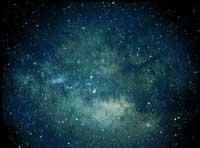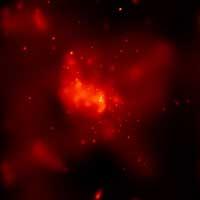Creating stars in interstellar space

Stars and planets form in mists located in interstellar space. In it environmental conditions are quite unpleasant. The pressure is very low and the temperature does not rise by -263º C. Even in the denser clouds molecules are very dispersed and intermolecular reactions are rare. Scientists believe that if intermolecular collisions occur, they occur between two molecules and that the joint clash of three is not very likely. However, molecules of 10 or more atoms can be found in clouds.
1% of cloud molecules are interstellar dust and scientists believe it has much to do with star formation. Dust particles are about the size of cigar smoke particles and are made of silicate or carbon composite materials. The surface of the particles is surrounded by a layer of ice, mainly water ice or frozen carbon monoxide.

When a star begins to form, the gases begin to collapse in the nucleus of the new star and the temperature increases. At any given time the gases can be so hot that they can escape the core. However, radiating heat out, you can add more gas to the core and form a star.
Scientists discover that the dust ice sheet is a good gas tank from which many of the gases involved in the formation of stars come. Therefore, dust can be more important than expected in the formation of stars.
Buletina
Bidali zure helbide elektronikoa eta jaso asteroko buletina zure sarrera-ontzian











